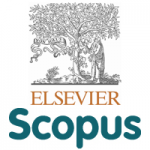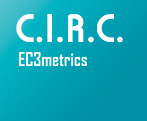Presencia de Saavedra Fajardo en un libro de emblemas neerlandés
Resumen
ABSTRACT:In 1668, the emblem bookHet voorhof der ziele[The Antechamber of the Soul] was published in Rotterdam by the bookseller and humanist François van Hoogstraten. Its main argument conveys the concept of vanitas, since its point of departure is found in the Tratado de La Vanidad del mundo(Treatise of the Vanity of the World) by the Spanish preacher, friar Diego de Estella (1574). This work, rather than slavishly following the sources and content of the Spanish treatise, includes a series of variants that allow for the corroboration that it is neither plagiarism nor a translation of the Spanish original. These variant include the incorporation of works subsequent to the publication of Estella's work. o this end, the introduction of numerous quotations of the emblematist Diego Saavedra Fajardo is significant. The aim of this work is to carry out an analysis of the presence of the diplomat from Murcia in the Dutch text to determine the reasons that led Hoogstraten to introduce in his repertoire the most important Spanish emblematist of the Modern Age.
KEYWORDS: Emblematics; Modern Age; François van Hoogstraten; Diego de Estella; Diego Saavedra Fajardo; Vanity.
RESUMEN:En 1668 vio la luz en Róterdam Het voorhof der ziele[Antesala del Alma], un libro de emblemas publicado por el librero y humanista François van Hoogstraten, cuyo argumento principal transmite el concepto de vanitas,ya que su punto de partida se sitúa en el Tratado deLa Vanidad del mundo del predicador español fray Diego de Estella (1574). La obra, más allá de seguir casi al pie de la letra las fuentes y contenidos recogidos en el tratado español, posee una serie de variantes que permiten corroborar que no se trata ni de un plagio ni de una traducción del mismo, tales como la incorporación de obras posteriores a su publicación. En este sentido, resulta significativa la introducción de numerosas citas del emblemista Diego Saavedra Fajardo. El propósito de este trabajo es realizar un análisis de la presencia del diplomático murciano en el texto neerlandés para determinar los motivos que llevaron a Hoogstraten a introducir en su repertorio al emblemista español más importante de la Edad Moderna.
PALABRAS CLAVES: emblemática; Edad Moderna; François van Hoogstraten; Diego de Estella; Diego Saavedra Fajardo; vanitas.
Palabras clave
Texto completo:
PDFEnlaces refback
- No hay ningún enlace refback.
URL: http://ojs.uv.es/index.php/IMAGO
Administración: C/ Universitat, 2 · 46003 Valencia.
M.Elvira.Mocholi@uv.es, Elena.Monzon@uv.es, mahiques@uv.es
ISSN digital: 2254-9633 / ISSN impresión: 2171-0147
MÉTRICA EN SJR BASADA EN SCOPUS
INDEXACIÓN






![]()







